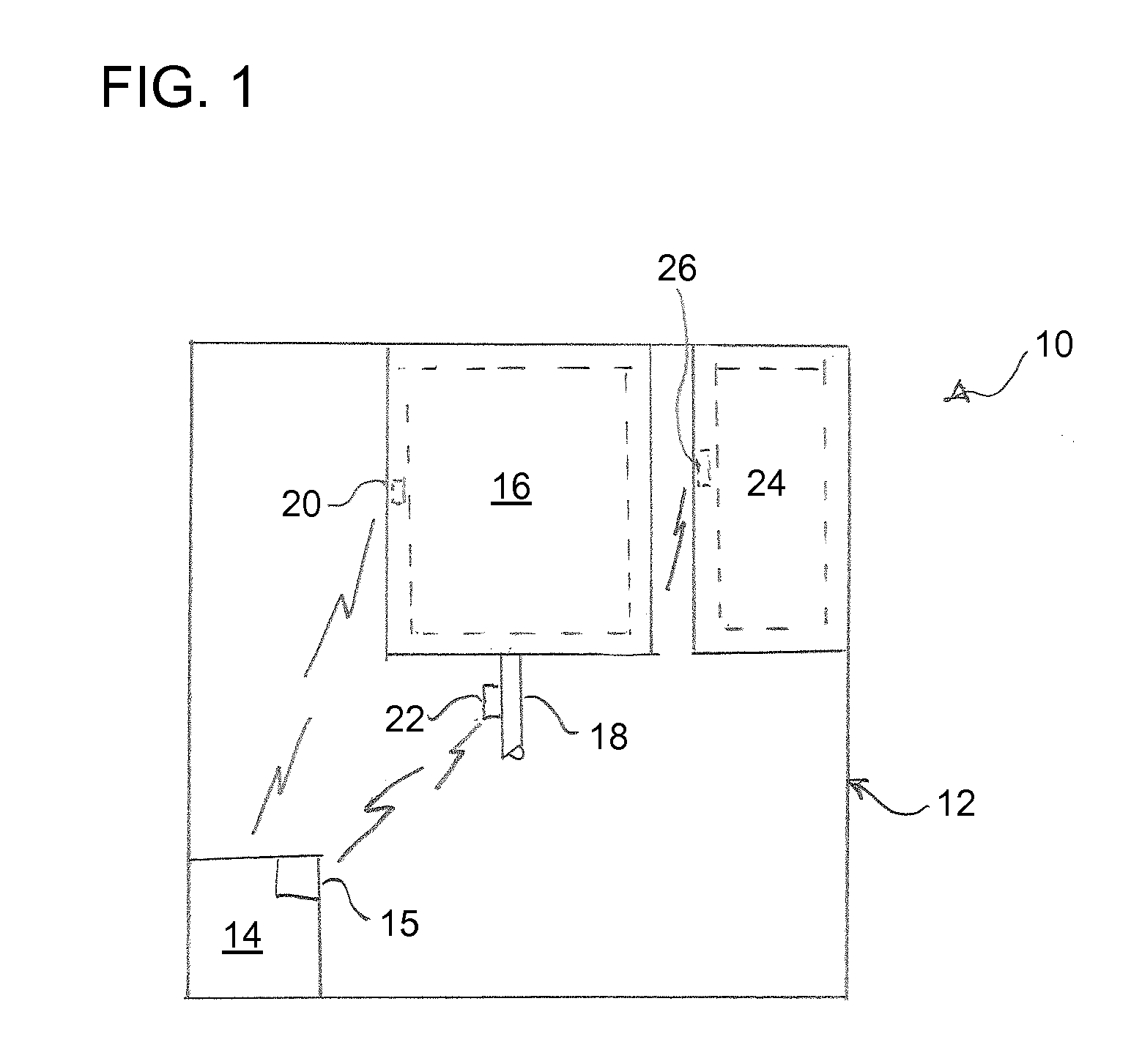[0006]The present invention is based on the general idea of using a sensor capable of
wireless data transmission for detecting a temperature in a drinks machine, for instance a sensor formed as a RFID
chip and of integrating it into a wall of a
pipe or of a container in which the fluid, for instance water or milk, whose temperature is to be detected, flows / is. Such a RFID
chip, particularly operating capacitively is capable of
wireless signal transmission to a control device and thus can be directly arranged at the
measurement point and be used particularly to control frothing processes at the same time. Furthermore, by integrating it into a wall of the pipe or the container, it is at least partially covered and protected by a layer of material and can thus be particularly also be integrated into removable components, as for instance a milk frother or a milk container. The sensor formed as a RFID chip can measure the temperature without contact through a
thin layer of the pipe or the container covering it, particularly of the milk frother in situ and transmit it in a wireless / contactless manner to the above mentioned control device. In this case, the customer can just remove the milk frother and clean it, even in the dish
washer, without having to be afraid of so damaging the RFID chip. By using the code of the RFID chip, it is possible to directly detect whether the milk frother was mounted and particularly also whether the right milk frother was mounted. For instance, it is imaginable here to use different milk frothers, e.g. a power frother and a normal frother, which can be easily identified via the RFID chip whereupon with this information, the corresponding parameters, for instance a quantity of air, can be adapted accordingly. It is particularly advantageous in such a sensor formed as a RFID chip that it does not need any
energy supply by a wire, but that it obtains the
operational energy by high frequent electromagnetic
waves. An internal wiring in the drinks machine can thus be avoided.
[0007]Evidently, the at least one senor can be arranged in the drinks machine or also in other peripherals, such as side coolers or containers, thermos flasks, bags, transport containers, the milk pot, frothing pot etc. In particular, it is imaginable here that the at least one sensor is arranged near a water tank or a milk tank and in this position cannot only detect the temperature of the water or the milk, but rather also a filling level of the container. By preferably completely embedding the at least one sensor in a material of the container or the pipe, it can for instance be molded with plastic during the production of the container and thus has a particularly protected position. The hidden position offers furthermore another big
advantage, i.e. that the sensor does not have to meet higher
hygiene requirements as it is not in direct contact with the milk or water or another type of food.
[0008]With the temperature sensor formed as a RFID chip according to the invention, particularly also the output temperature or the frothing quality at milk frothers can be improved, as such a senor, if it is arranged directly on a frothing head, is capable of measuring the current temperature there and to transmit it directly to a control device, which then adjusts the frothing process. With conventional sensors, such as thermocouples or NTC sensors, measuring the temperature directly at the frothing head is not possible or very difficult, as on the one hand, a wiring would be needed there and on the other hand the NTC sensor or also the
thermocouple would be exposed to high hygienic requirements, as it would be in direct contact with the milk. Furthermore, in particular this area is generally cleaned by the user himself / herself, so it is developed to be removable, which also makes using currently known sensors more difficult. Also, particularly the frothing head is not only removed by the user, but also partially disassembled, which would lead to a high
failure rate with externally arranged temperature sensors of previous design. By integrating the temperature sensor formed as a RFID chip according to the invention into a wall of the container or in a wall of the frothing head, it can be arranged in an extremely protected manner and thus resists even mechanical and / or chemical stress, as caused for instance by the user's cleaning.
[0010]Generally, the at least one sensor can be formed as an active or passive RFID chip, wherein active means that the sensor is provided with its own
energy source, for instance a battery. Also, the at least one sensor can be provided with a
data memory, in which for instance after switching off the drinks machine, a
temperature curve is saved. Furthermore, the at least one sensor can be formed to detect at least one other parameter, as for instance pressure, distance, density or
humidity, thus considerably enlarging the range of application.
 Login to View More
Login to View More  Login to View More
Login to View More 

